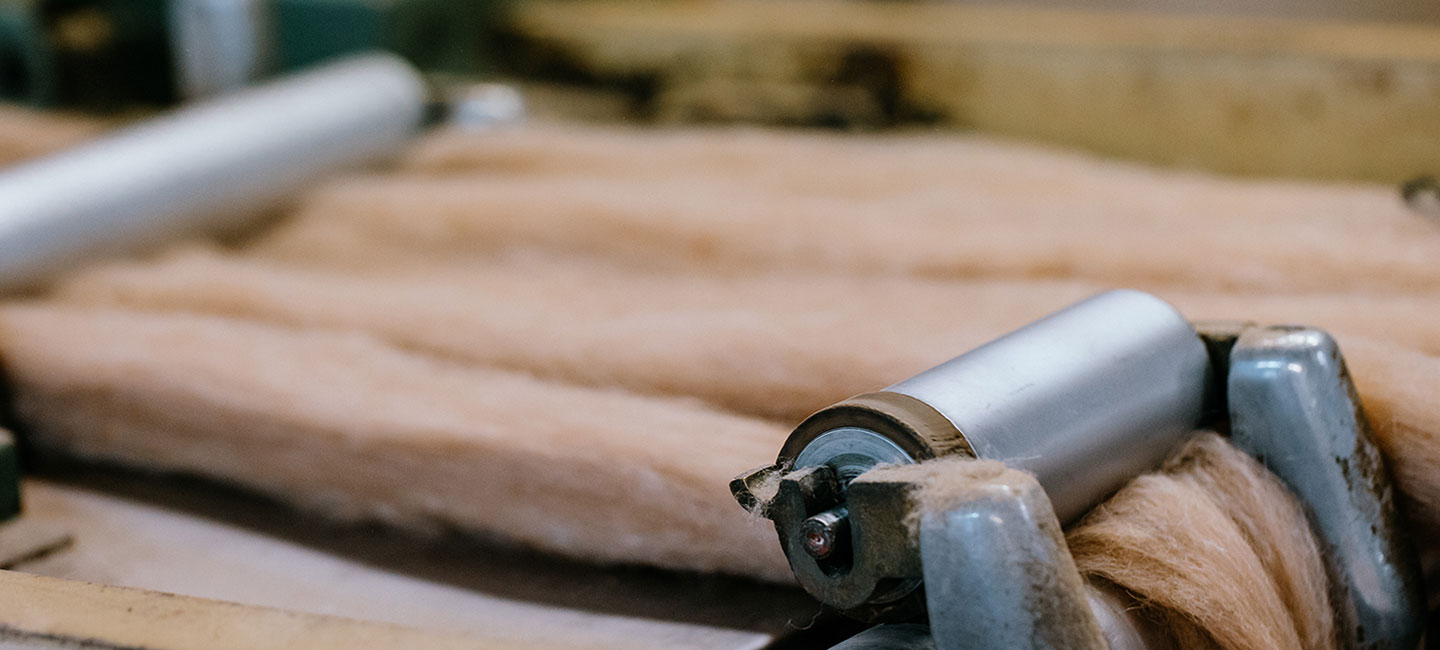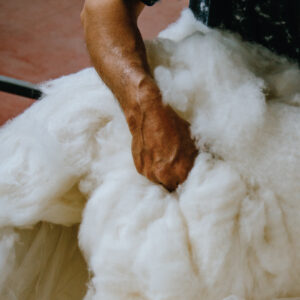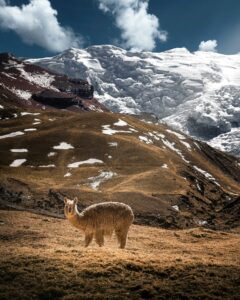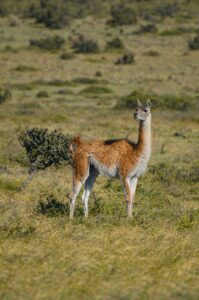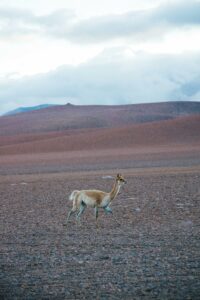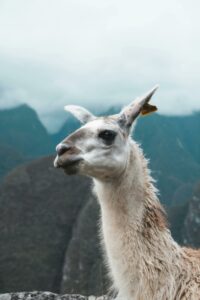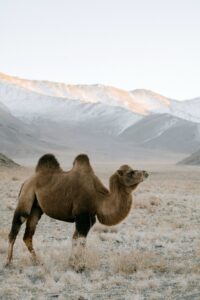Camel Hair: The International Year of the Camelids 2024
Camel Hair, the first fibre we are showcasing in the International year of the Camelids, it is either gathered, shorn, or combed from the domestic Bactrian Camel, 2 humps are better than 1!
Known for travelling the silk-road trading routes, the Bactrian camel is native to Central Asia. They thrive in the arid grasslands and the Gobi desert, where they are more than at home in temperatures as low as – 30 degrees C and as high as 50 degrees C. This is due their extremely versatile hair, which is a mixture of the coarse, protective guard hair, 32-38mic, and the soft inner hair, 19-24mic which keeps the camels protected from the harsh winter temperatures.
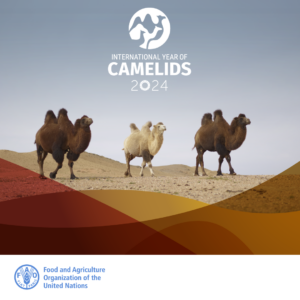 Camel has traditionally been used for thousands of years, even being mentioned in the bible, mainly for floor coverings, tents and coats. In the modern era, camel hair has become a must-have in a collection and has proved to be one of the most versatile of natural fibres.
Camel has traditionally been used for thousands of years, even being mentioned in the bible, mainly for floor coverings, tents and coats. In the modern era, camel hair has become a must-have in a collection and has proved to be one of the most versatile of natural fibres.
Once the camel hair has been collected, it goes through a rigorous carding process called dehairing. This is where the long, coarse guard hair is separated from the short, fine inner hair. By passing over a series of rollers with fine needles, the soft, fine hair sticks to the rollers and the guard “drops out” This is collected and kept separate for the fine hair.
Once the fine dehaired camel hair is separated, it is spun into a woollen yarn, either on its own, or blended with other natural fibres, such as wool or cashmere. These yarns are then woven into luxurious cloth which is used for jackets, coats, and blankets. Typically, camel is kept as its original distinctive “camel” colour. However, there is a very limited amount of natural white camel hair, which looks very much like cashmere.
The coarser hair is used in a wide variety of applications, from mattress pads, to duvets, and the interlining of suits. The Manes, which grows in the winter months, is coarser and has a reddish colour, this is also used in the bedding and interlining industries, but is also for craft applications, like Halloween masks, and the carpet industry.
Camel hair truly is one of the most versatile natural fibres, and a testament to the amazing Bactrian camels that we have to thank for it.
The next fibre showcase will be Vicuña in July.


